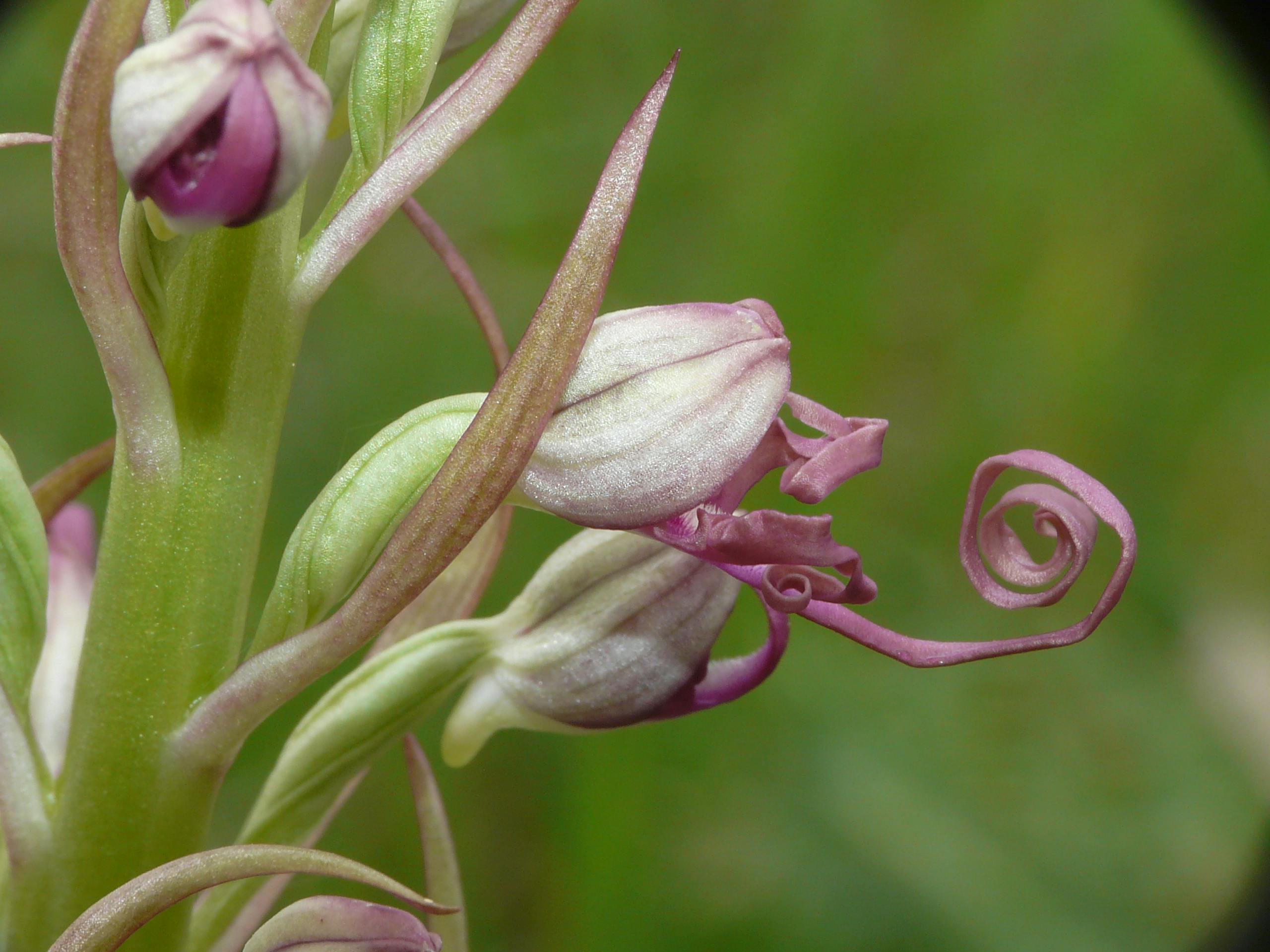Orchid – Genus Himantoglossum
The name comes from the Greek imas = strap and glossa = tongue and refers to the narrow, elongated shape of the labellum.
The genus has a Mediterranean-Atlantic distribution with 8 species, of which 2 are present in Italy, Himantoglossum adriaticum and Himantoglossum hircinum.
Himantoglossum adriaticum can be found in the Boboli Gardens.
Himantoglossum adriaticum
The specific name refers to its distribution area that was initially identified on both sides of the Adriatic Sea. It can be found all over the peninsula, with the exception of Apulia and Valle d'Aosta, and is absent in the major islands.
The stem is 30 to 90 cm high, with large, basal leaves. On average, the flowers may range from 15 to 40. Some specimens were found with more than 100 flowers. Median sepals and petals are joined to form a helmet, of a light green colour, with red streaks on the inside. The labellum (median petal) presents two lateral lobes with wavy edge, up to 25 mm long, and a central one, 35 to 65 mm long, which is twisted and bifid at the apex. The colour is white with red speckles.
H. adriaticum is reported on the Red List of the Italian flora among the endangered species, classified as LC (least endangered).
Its pollen is transported by hymenoptera, diptera and coleoptera; sometimes the plant can self-fertilise.
It flowers from the end of May to June. There is only one plant currently known in Boboli, which can be found in the Upper Botany Garden.
Orchidee d’Italia: Guida alle Orchidee spontanee. GIROS, Gruppo italiano per la ricerca sulle orchidee spontanee, Cornaredo 2024, p. 149.
